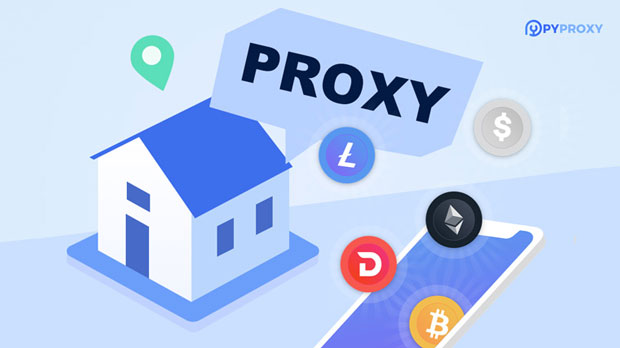How do I choose a package to ensure the best value for money when purchasing SOCKS5 Proxy Services?
When considering purchasing socks5 proxy services, the key to getting the best value lies in understanding your specific needs and how different package features align with those needs. While it may be tempting to choose the cheapest option available, it’s crucial to assess factors like server locations, bandwidth limits, security protocols, and customer support. Choosing the right SOCKS5 proxy package requires a strategic balance between cost, performance, and the scope of service offered. This article will delve into how you can evaluate different plans to ensure you get the most value for your money while optimizing your proxy experience. Understanding SOCKS5 Proxy: A Quick OverviewBefore diving into how to choose the best package, it’s important to understand what socks5 proxies are and how they work. SOCKS5 is an internet protocol that routes traffic through a proxy server, masking your original IP address and enhancing privacy. Unlike traditional HTTP proxies, SOCKS5 supports all types of internet traffic, including HTTP, FTP, and P2P, making it a versatile option for various online activities such as web browsing, torrenting, and gaming.For individuals or businesses seeking anonymity, data protection, or simply to access geo-restricted content, SOCKS5 proxies are a reliable tool. However, not all SOCKS5 proxy services are created equal, and different packages offer varying levels of performance and additional features.Key Factors to Consider When Choosing a SOCKS5 Proxy PackageTo select the right SOCKS5 proxy package, consider the following factors:1. Bandwidth and Speed RequirementsBandwidth and speed are critical factors in choosing a SOCKS5 proxy plan. High-speed connections are essential for tasks like streaming, gaming, or large file downloads. If your primary purpose is web browsing or using proxy servers for low-bandwidth activities, a basic package might be sufficient. However, if you need to run multiple concurrent connections or require high-speed data transfer, it's best to opt for a plan with higher bandwidth and guaranteed speeds.It’s also important to consider any data limits or throttling that might be imposed by the proxy provider. Many cheaper packages have restrictive bandwidth caps, which can result in slower speeds or additional fees if the limit is exceeded. For high-volume users, an unlimited bandwidth package might be a better option.2. Server Location and Geographic CoverageServer location plays a pivotal role in the efficiency and performance of SOCKS5 proxies. When choosing a package, consider the regions where you require access. A well-distributed server network enables you to access content or services from different countries without compromising speed. For example, if you need access to US-based services while residing in Europe, a provider with US servers will help reduce latency and improve connection speeds.Some proxy services also offer specialized IP locations (e.g., specific cities or regions), which might be necessary for businesses or individuals who need to appear as though they are browsing from specific geographic locations.3. Security and EncryptionWhile SOCKS5 proxies are known for their ability to mask your IP address, they don’t inherently offer strong encryption. Therefore, when selecting a plan, consider whether additional security features are included, especially if you're handling sensitive data or want to enhance privacy further.Some SOCKS5 proxy services offer built-in encryption or integrate with tools like VPNs for added security. This can be particularly important if you're accessing websites that require logging in, handling personal information, or working in a sensitive field. For high-security needs, ensure that the provider’s package includes robust security measures, such as HTTPS support, DNS leak protection, and the use of SSL/TLS encryption protocols.4. Number of Concurrent Connections and Device SupportThe number of devices or connections supported by the proxy service is another essential factor. For users who plan to use proxies on multiple devices (e.g., smartphones, tablets, and desktop computers), choosing a plan that allows multiple concurrent connections will ensure you get the most value for your money.Many providers offer different packages based on the number of allowed simultaneous connections. If you only need one connection, a basic plan might be sufficient, but for larger-scale use, such as for a business or for accessing multiple accounts simultaneously, opt for a package that supports multiple devices.5. Customer Support and Service ReliabilityQuality customer support is often overlooked but can be a game-changer when technical issues arise. Look for a SOCKS5 proxy service that offers round-the-clock customer support, preferably with multiple channels (e.g., live chat, email, phone support) to ensure you can reach assistance when needed.Additionally, evaluate the provider’s service reliability. Some low-cost packages may come with higher downtimes or less responsive support, which could affect your productivity or online experience. A reliable service with minimal outages will ensure your proxy remains accessible when you need it most.6. Pricing and Payment OptionsPricing is an obvious factor when choosing a SOCKS5 proxy package. However, it's important to understand what you're paying for. Cheaper packages may have restrictions such as lower speeds, limited server access, or fewer security features, while premium packages typically offer enhanced performance and added benefits.Additionally, check the payment options available. Some providers offer flexible payment terms, such as monthly, quarterly, or annual payments. If you're unsure about committing long-term, it may be worth opting for a monthly plan initially. Some providers also offer trial periods, allowing you to test the service before making a financial commitment.7. Reputation and ReviewsWhile personal research is important, checking user reviews and expert opinions can provide valuable insights into the quality of service offered by different SOCKS5 proxy providers. Reviews often highlight key aspects such as customer service, uptime, performance, and whether the service lives up to its advertised promises. Be cautious of unusually positive or negative reviews, as they may be biased, but a consensus of well-balanced feedback can guide your decision.Optimizing Value for Money: A Strategic ApproachTo maximize the value for your money, it’s essential to align the features of the SOCKS5 proxy package with your specific needs. If you’re an occasional user, a basic plan with fewer features and lower cost may suffice. For more intensive use, such as running multiple devices, higher data requirements, or needing more secure access, investing in a premium plan is advisable.It’s also important to factor in future scalability. Choose a provider that allows you to easily upgrade your plan as your needs grow. Some services offer the flexibility to scale up bandwidth, the number of concurrent connections, or even geographic server options as required, ensuring that your proxy service remains suitable for your evolving needs.ConclusionChoosing the right SOCKS5 proxy package requires careful consideration of multiple factors, including speed, server location, security, and customer support. By understanding your own requirements and weighing the pros and cons of different packages, you can make a well-informed decision that delivers the best value for your investment. Remember, the cheapest option is not always the best in the long run, so consider performance, reliability, and scalability to ensure your SOCKS5 proxy meets your needs both now and in the future.
2025-01-08

























































